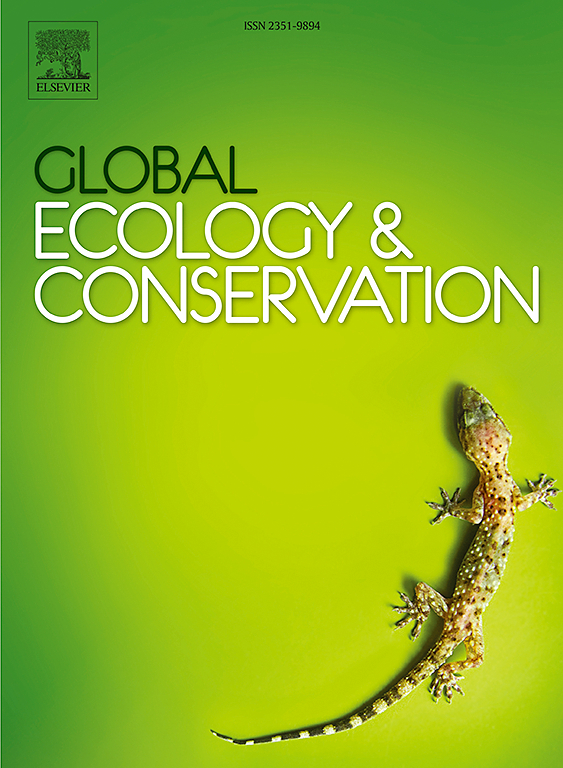The inbreeding paradox: Is inbreeding avoidance inevitable? - A case study of moose (Alces alces) in the Northeast China
IF 3.5
2区 环境科学与生态学
Q1 BIODIVERSITY CONSERVATION
引用次数: 0
Abstract
Genetic diversity is key for species’ resistance (enabling them to endure disturbances with little alteration) and resilience (recovering swiftly to their original state or a similar condition). The prevailing view in population genetics is that species attempt to avoid the harms of inbreeding. We speculate that sometimes individuals do not reject mating requests from relatives when choosing mates. Moose (Alces alces cameloides) in the Greater Khingan Mountains (GKM) of China is a first-class key protected species. It represents the southernmost distribution of moose globally and serves as a thermosensitive species of global significance. Based on the state of moose in China, we used a non-invasive sampling method to conduct a series of studies on genetic diversity and inbreeding. The mitochondrial and nuclear genetic diversity of moose in this area are at a moderately high level worldwide, with good individual genetic quality, a high level of overall genotype heterozygosity. The Bayesian gene flow level indicates gene exchange between local populations. Molecular pedigrees revealed instances where individuals mated with their offspring or even grandchildren. The relatedness coefficient (r) between moose mating pairs were significantly higher than those of random mating. Therefore, there is no evidence that individuals in the GKM avoid inbreeding, and under these circumstances, there has not been a negative impact on genetic diversity of the moose population, as well as the genetic quality and genotype heterozygosity of offspring. In the context of future climate change and human activities, we need to closely monitor the long-term impact of this mating choice on the survival of the GKM moose population and promptly develop corresponding conservation and management strategies.
求助全文
约1分钟内获得全文
求助全文
来源期刊

Global Ecology and Conservation
Agricultural and Biological Sciences-Ecology, Evolution, Behavior and Systematics
CiteScore
8.10
自引率
5.00%
发文量
346
审稿时长
83 days
期刊介绍:
Global Ecology and Conservation is a peer-reviewed, open-access journal covering all sub-disciplines of ecological and conservation science: from theory to practice, from molecules to ecosystems, from regional to global. The fields covered include: organismal, population, community, and ecosystem ecology; physiological, evolutionary, and behavioral ecology; and conservation science.
 求助内容:
求助内容: 应助结果提醒方式:
应助结果提醒方式:


